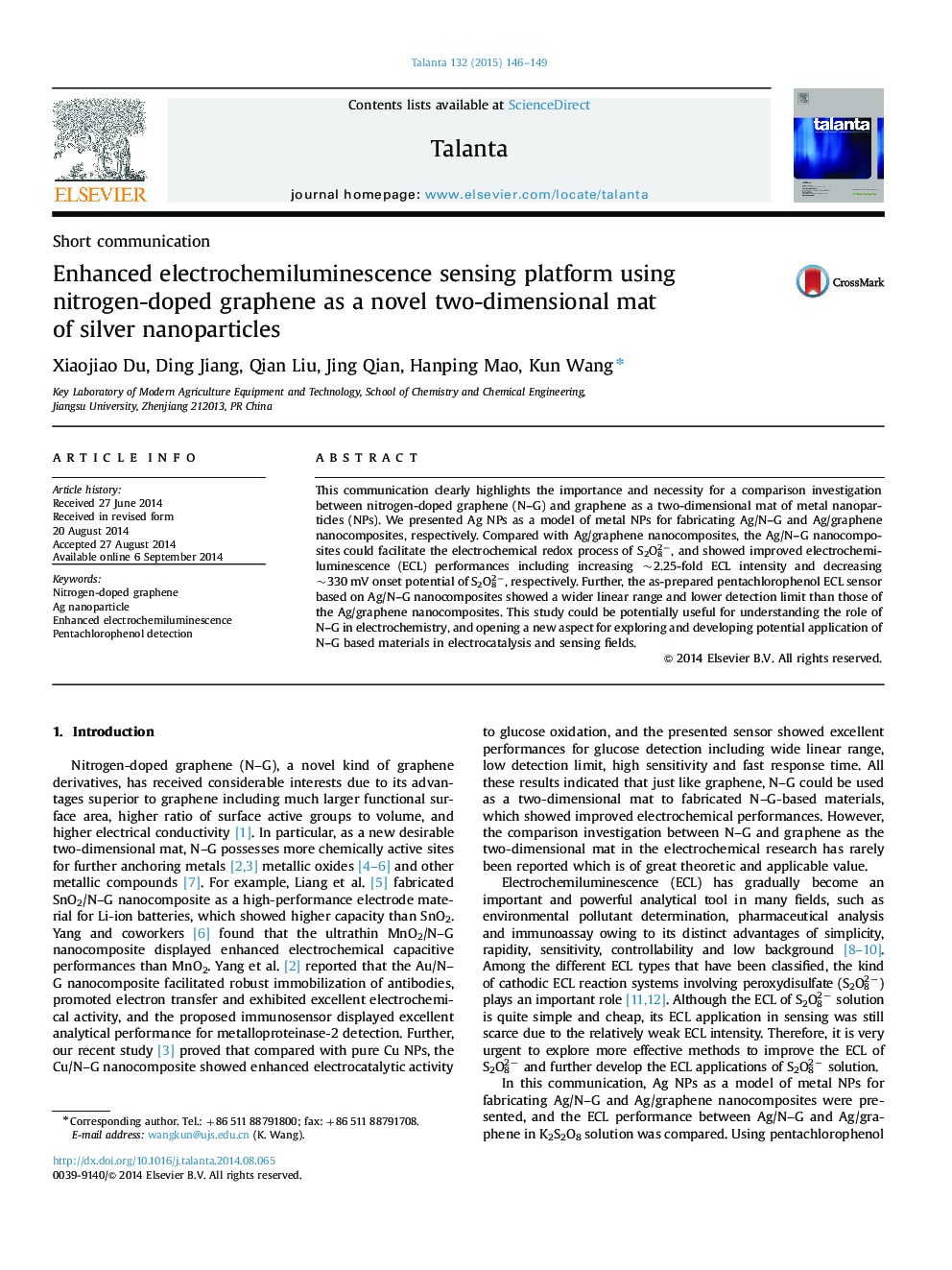| کد مقاله | کد نشریه | سال انتشار | مقاله انگلیسی | نسخه تمام متن |
|---|---|---|---|---|
| 1242000 | 1495803 | 2015 | 4 صفحه PDF | دانلود رایگان |
• The electrochemical and ECL performance between Ag/N–G and Ag/graphene is compared.
• Ag/N–G display enhanced electrochemical activity to K2S2O8 compared with Ag/graphene.
• Ag/N–G show amplified ECL intensity and decreased onset potential in K2S2O8 solution.
• Lower detection limit and wider linear range toward PCP is obtained at Ag/N–G/GCE.
This communication clearly highlights the importance and necessity for a comparison investigation between nitrogen-doped graphene (N–G) and graphene as a two-dimensional mat of metal nanoparticles (NPs). We presented Ag NPs as a model of metal NPs for fabricating Ag/N–G and Ag/graphene nanocomposites, respectively. Compared with Ag/graphene nanocomposites, the Ag/N–G nanocomposites could facilitate the electrochemical redox process of S2O82−, and showed improved electrochemiluminescence (ECL) performances including increasing ~2.25-fold ECL intensity and decreasing ~330 mV onset potential of S2O82−, respectively. Further, the as-prepared pentachlorophenol ECL sensor based on Ag/N–G nanocomposites showed a wider linear range and lower detection limit than those of the Ag/graphene nanocomposites. This study could be potentially useful for understanding the role of N–G in electrochemistry, and opening a new aspect for exploring and developing potential application of N–G based materials in electrocatalysis and sensing fields.
Figure optionsDownload as PowerPoint slide
Journal: Talanta - Volume 132, 15 January 2015, Pages 146–149
